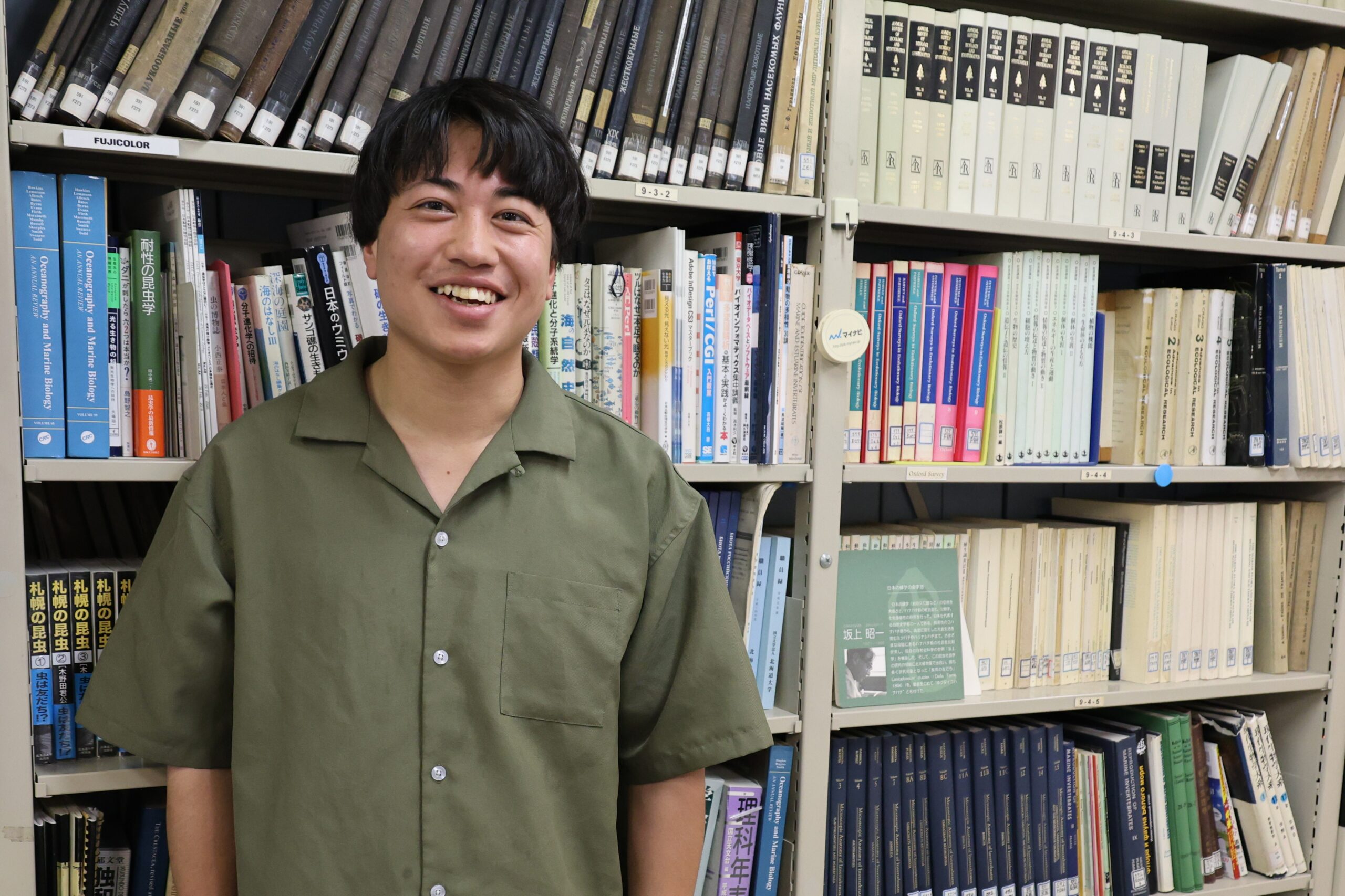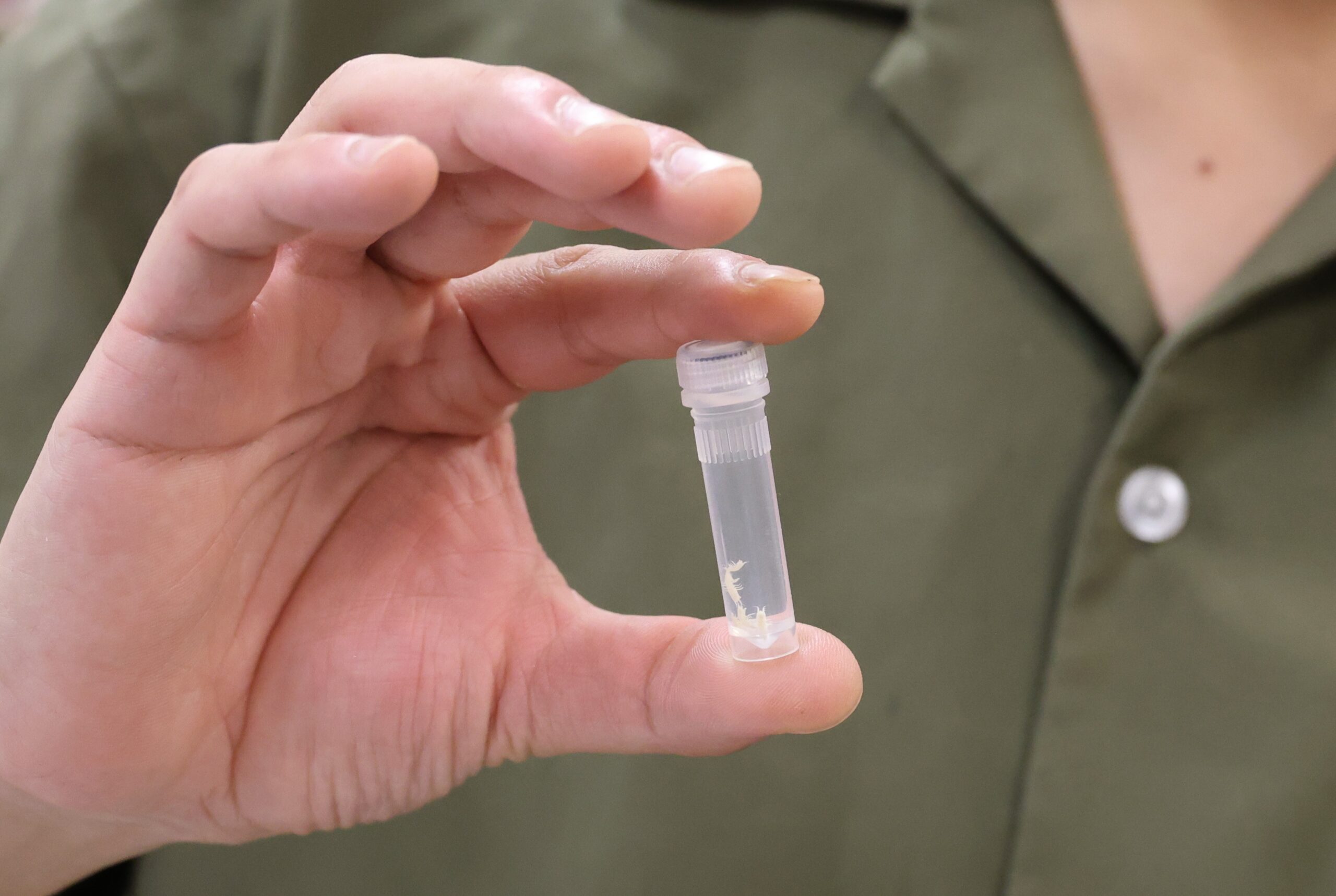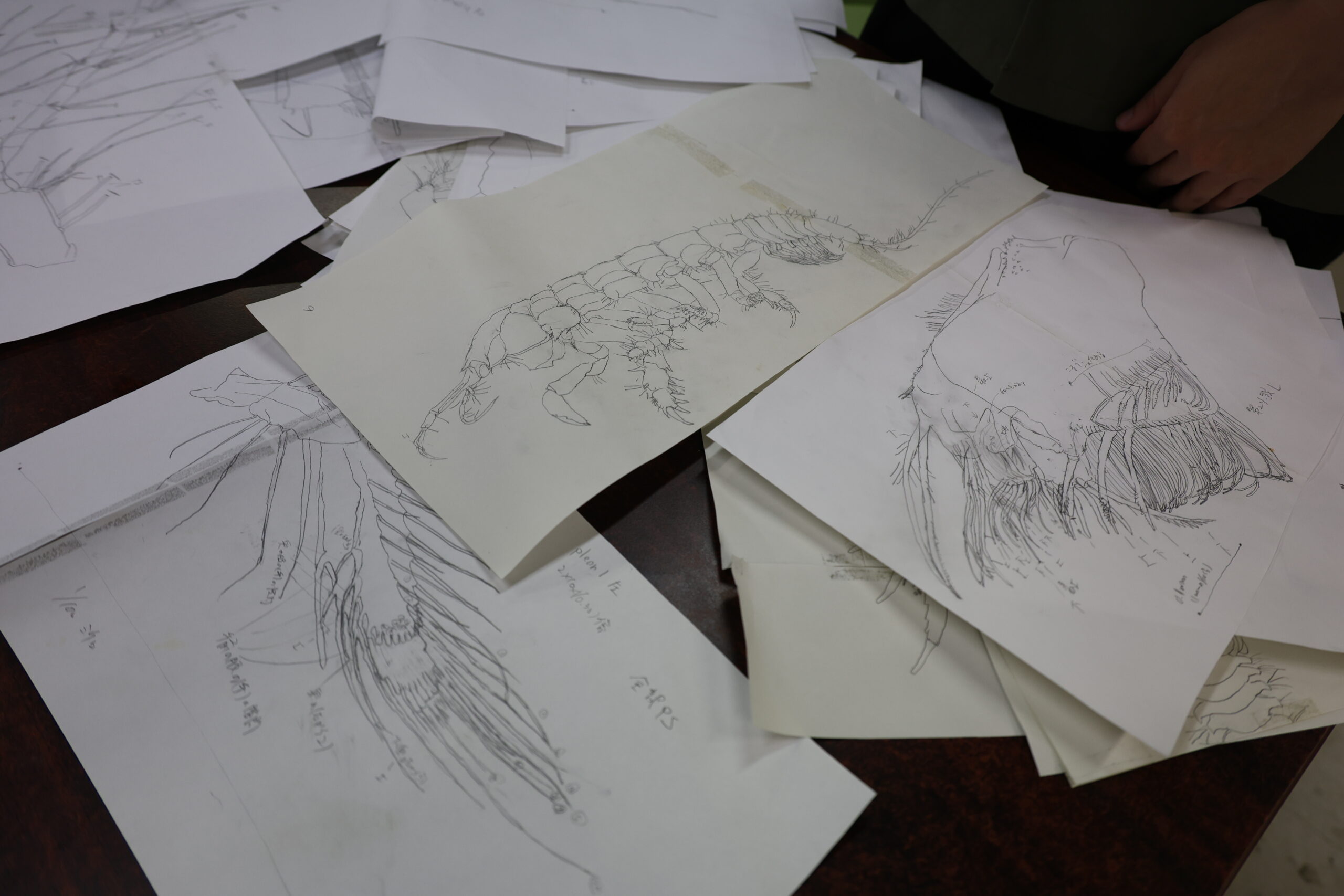In 2009, a research group led by Dr. Keiichi Kakui at the Faculty of Science discovered a rather unusual small crustacean neither in the deep sea nor in the distant ocean, but in a familiar location. This species is simultaneously hermaphroditic, having male and female reproductive organs in one body, and has been shown to be the first species in the world in Malacostraca-the most-species rich crustacean group-capable of "self-fertilization". Yoshinobu Matsushima (M2, Graduate School of Science) revealed it as a new species and named it Apseudes ranma, after the main character in Rumiko Takahashi's manga Ranma 1/2. This species was also selected as one of the "Ten remarkable new marine species from 2024" by the World Register of Marine Species (WoRMS), an international database that provides classification information on marine life.
Q. Where did Dr. Kakui first discover Apseudes ranma in 2009?
It was in the Port of Nagoya Public Aquarium located in Nagoya City. The aquarium's tanks unintentionally contain small creatures attached to clumps of dead coral or mixed in with the sea sand. Dr. Kakui was examining the sand at the bottom of the tank when he found a creature digging a tunnel in the sand through the glass. He asked the aquarium staff to give this creature to him for his research.
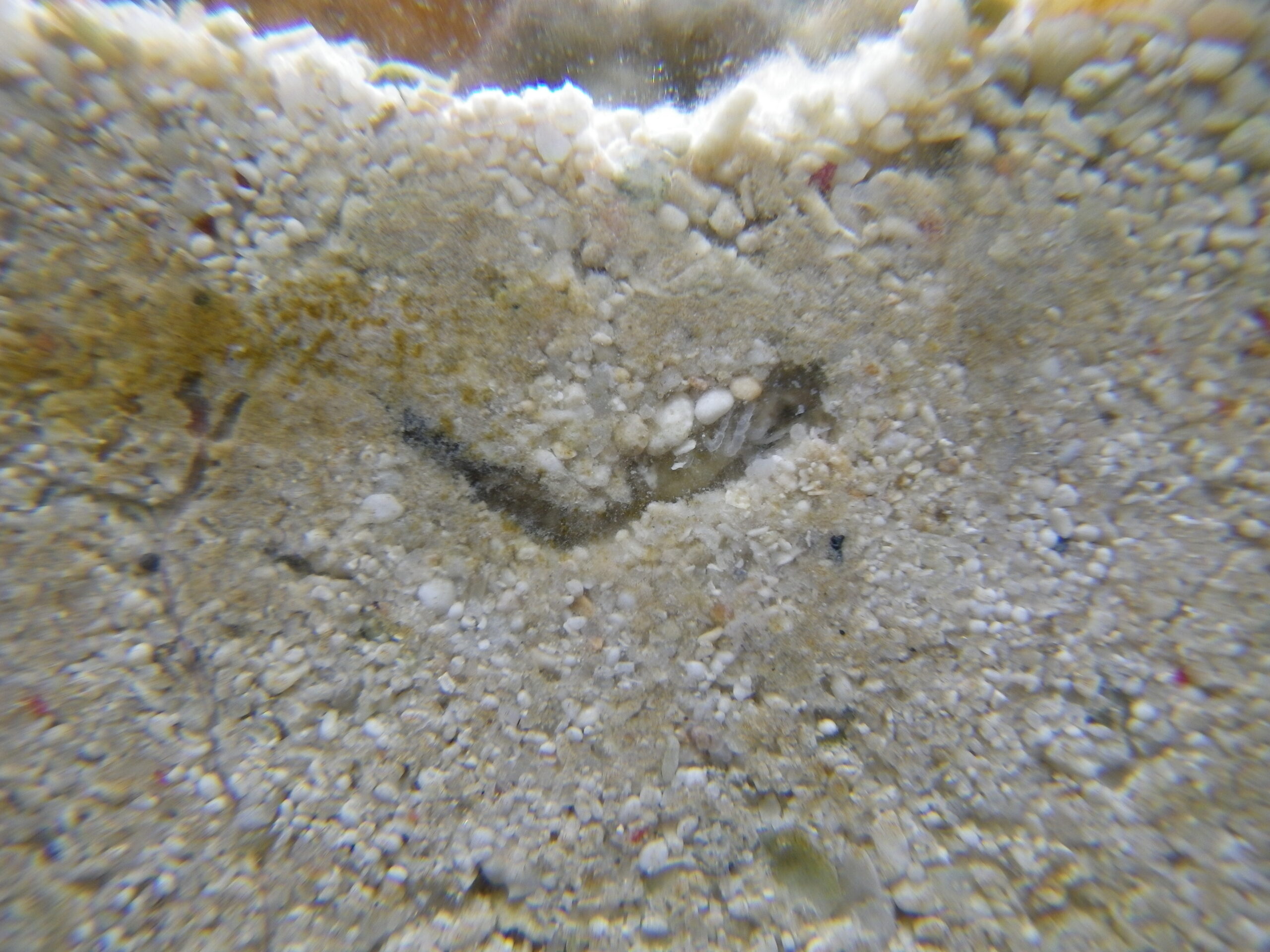
Apseudes ranma digging a tunnel in the bottom of the aquarium tank at the Port of Nagoya Public Aquarium. (Image provided by Keiichi Kakui)
Dr. Kakui later confirmed that this species is simultaneously hermaphroditic by observing its internal and external reproductive organs. Following this, he raised some individuals in complete isolation from each other across multiple generations. As a result, he found that this species is able to reproduce by producing fertilized eggs by itself-in other words, it is simultaneously hermaphroditic and can self-fertilize. This finding was published in 2013.
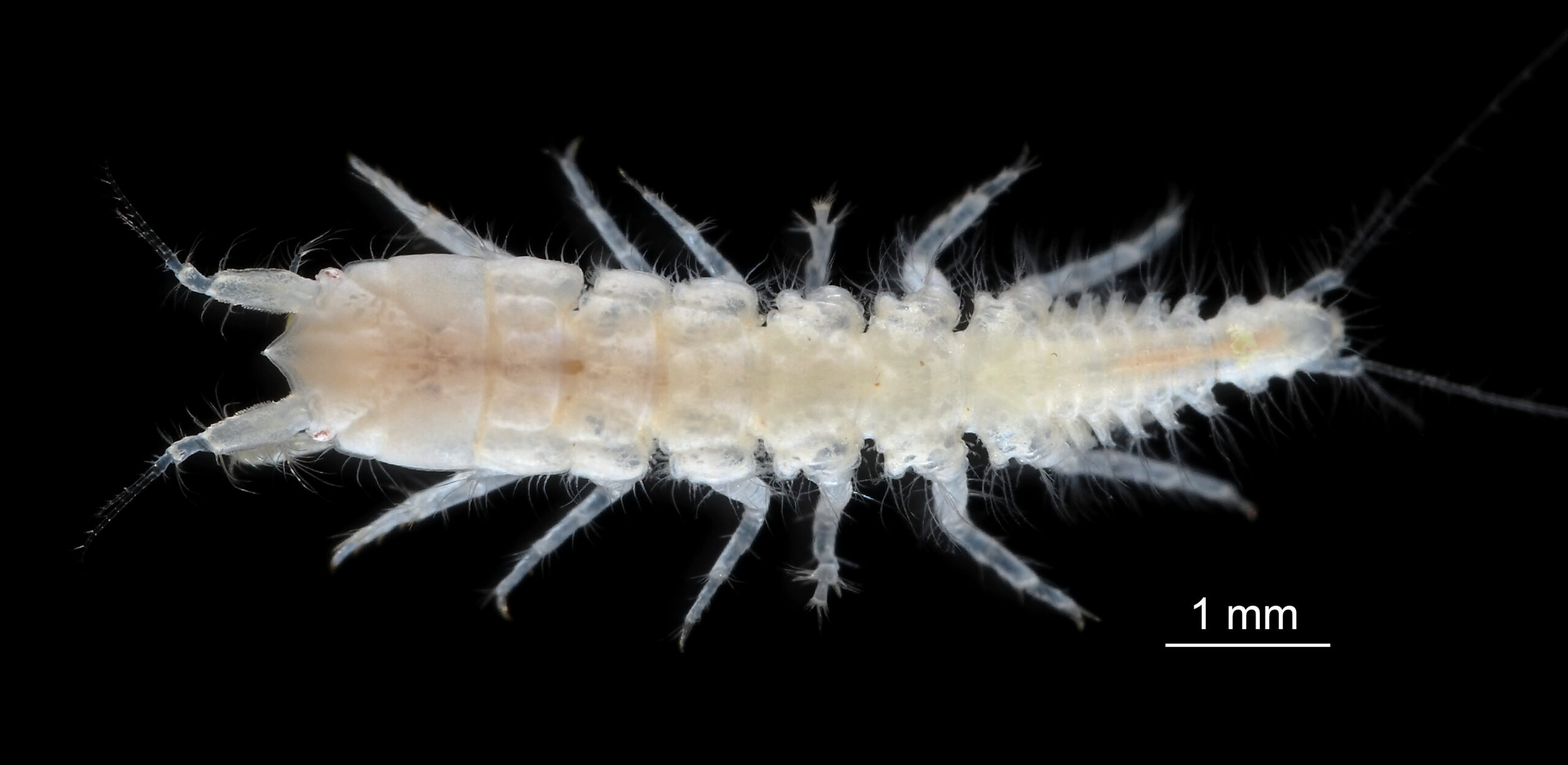
Dorsal view of an Apseudes ranma individual (anterior on the left side). (Image provided by Keiichi Kakui)
Q. What is "self-fertilization?"
Self-fertilization is the production of offspring using the reproductive cells in one's own body, without mating with other individuals. For example, plants can self-fertilize, or self-pollinate, because they have stamens and pistils.
Even crustaceans such as barnacles have been known to self-fertilize. Apseudes ranma discovered in this study is a member of the class Malacostraca, which includes shrimps, crabs, and woodlice. Malacostraca contains about 40,000 species and is the largest class of crustaceans. Dr. Kakui's research revealed that Apseudes ranma is the first malacostracan species in the world to self-fertilize.
Q. How long did it take to realize that it is a newly identified species?
Apseudes ranma is a member of the genus Apseudes of the malacostracan order Tanaidacea. Species distinction is difficult in Tanaidacea; as congeneric species have similar morphology, detailed differences are required to distinguish them. This species, thus, had been used as a species of Apseudes in past studies. In 2022, when I was assigned to Dr. Kakui's laboratory as a fourth-year undergraduate student, he suggested that I investigate whether this was a new species. The rugged and thorny body of Apseudes individuals that he showed me struck me as cool, so I decided to make it the subject of my bachelor's thesis research.
Q. How did you identify it as a new species?
Apseudes ranma is only a few millimeters long, so I made detailed observations of its body features under a microscope and analyzed its DNA. For crustaceans like shrimp and crabs, we identify the species by the shape of their legs and parts around their mouths. First, dissection is necessary, but since their bodies are small, we use sharpened needles to dissect their legs one by one from the body under the microscope. The legs are then placed on a slide and examined under a light microscope, where features such as spines or dense hairs are observed and sketched. These fine details are important for classification in Tanaidacea, so the sketches were made with great care.
After observing several specimens, I identified features that were common to all the observed individuals. I then compared the species with previously discovered species. I concluded that Apseudes ranma is a new species, as it has a greater number of spines on the second to fourth walking legs, compared to other species.
Q. What did you learn from your observations?
Inside their scissors-shaped legs (chelipeds), I discovered a structure that resembles a musical instrument that produces sound through friction. There was one cylindrical projection and a knobbly area on the inside of each of the left and right legs. When one projection rubbed the knobbly area on the other, it might make a sound just like a güiro, a percussion instrument made from a hollowed-out gourd or wood. Yet, due to its minute body, it is difficult to confirm whether the sound is really produced, but still we believe that this structure may be used for communication among the members of the group.
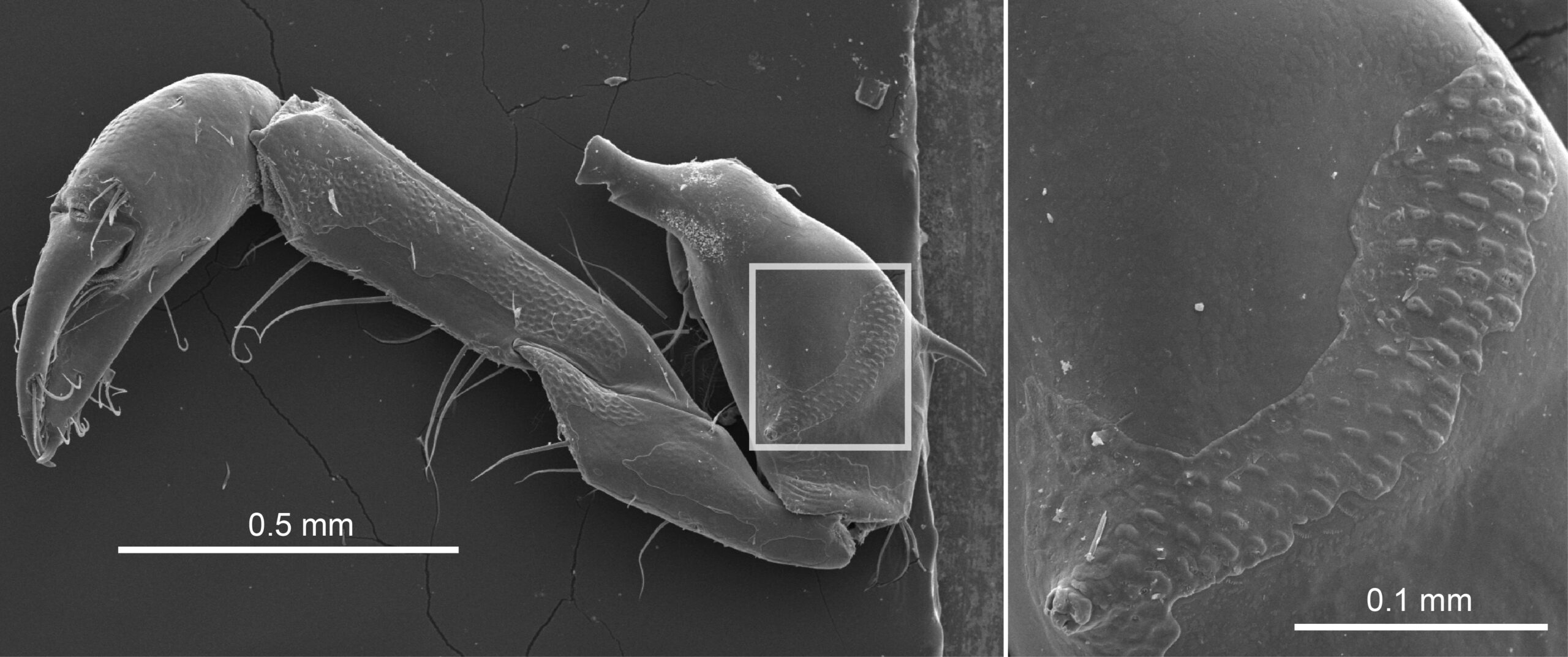
Scanning electron microscope images of the inner side of the right cheliped of Apseudes ranma. The left image shows the entire cheliped, and the right image shows an enlarged view of the white frame in the left image, showing a single cylindrical projection and knobbly area. (Images provided by Keiichi Kakui)
Q. Why did you name this new species Apseudes ranma?
I love reading manga and have always been a fan of Rumiko Takahashi. One of her works is called Ranma 1/2, in which the main character, Saotome Ranma, is male, but when he is covered with water, he changes into a female. I wanted to name the new species of hermaphrodite after him. Through an editor at Shogakukan, I received permission from Rumiko Takahashi herself to name it Apseudes ranma. I was very happy to be allowed to use the name and to be indirectly connected with my favorite manga artist.
Q. What are your future plans?
I am currently studying another species, and there are still many mysteries about Apseudes ranma, such as how it communicates with its mates and where it came from. I am also hopeful that the discovery of Apseudes ranma, the species that was shown to self-fertilize for the first time in Malacostraca, will contribute to reproductive research in malacostracans, such as shrimp and crab aquaculture, for example.
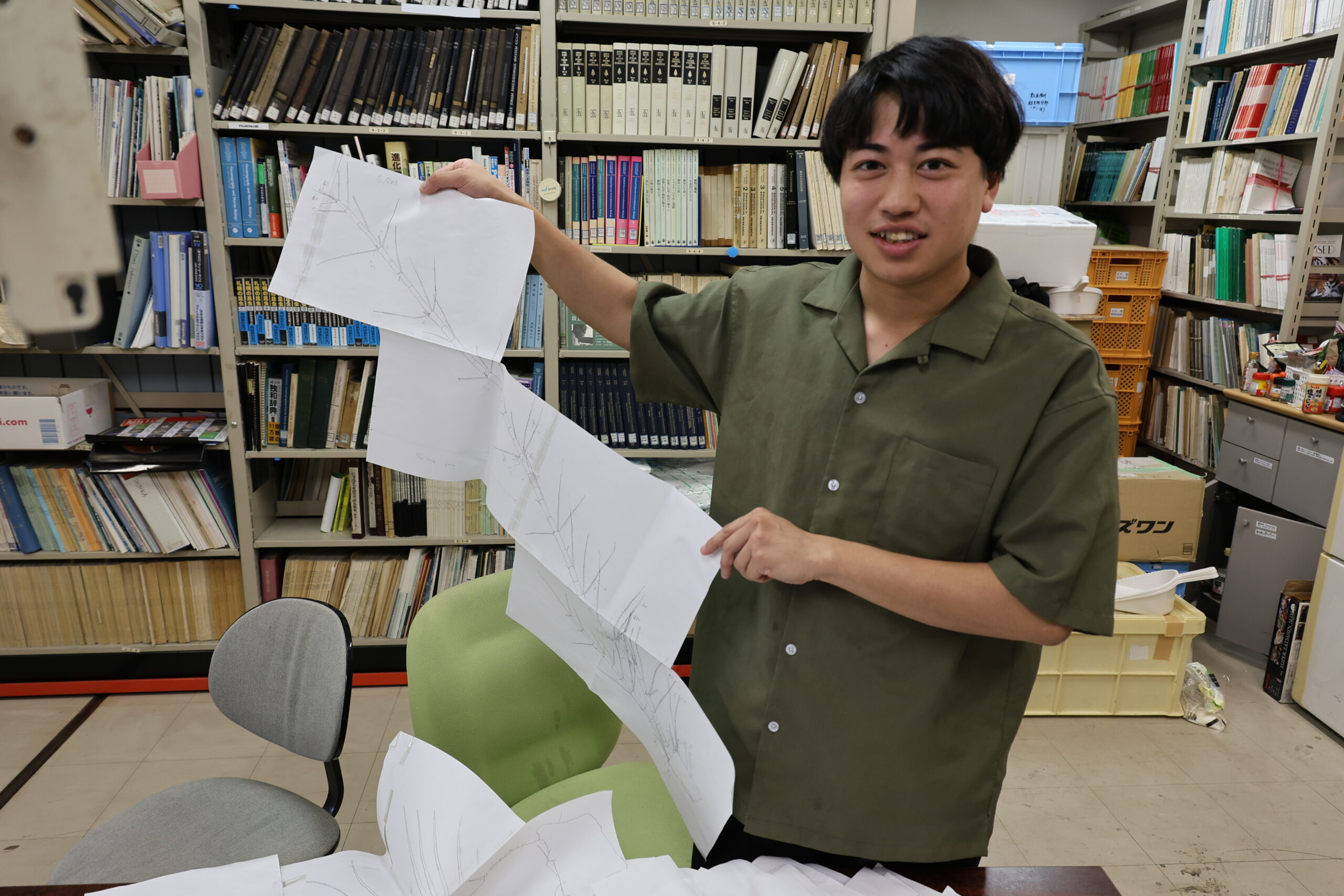
Matsushima holding a sketch of the leg that shows features to conclude his species as the new species. (Photo by Yuka Saito)
Q. We look forward to your new activities as a "new species hunter"!
Ever since I was involved in the research on Apseudes ranma, I always look for creatures in the sand at the bottom of the tank when I visit aquariums. When I went to Okinawa with my lab members, we stopped by the Churaumi Aquarium, and we were all absorbed in observing the sand at the bottom of the huge aquarium tank. Surprisingly, there are many creatures hiding there.
When you visit an aquarium, please pay attention to the small creatures at the bottom of the tank and in the sand too. Perhaps you will discover something new!
References
- Yoshinobu Matsushima and Keiichi Kakui (2024) Apseudes ranma sp. nov. (Tanaidacea: Apseudidae) found in a public aquarium, with notes on phylogeny and a presumptive stridulatory organ. Bulletin of Marine Science 100: 451-469. https://doi.org/10.5343/bms.2024.0030
- Press release issued by Hokkaido University in Japanese: https://www.hokudai.ac.jp/news/pdf/240730_pr.pdf
- Ten remarkable new marine species from 2024 by the World Register of Marine Species (WoRMS) https://www.marinespecies.org/worms-top-ten/2024
Originally written in Japanese by Yuka Saito
Rearranged by Aprilia Agatha Gunawan

